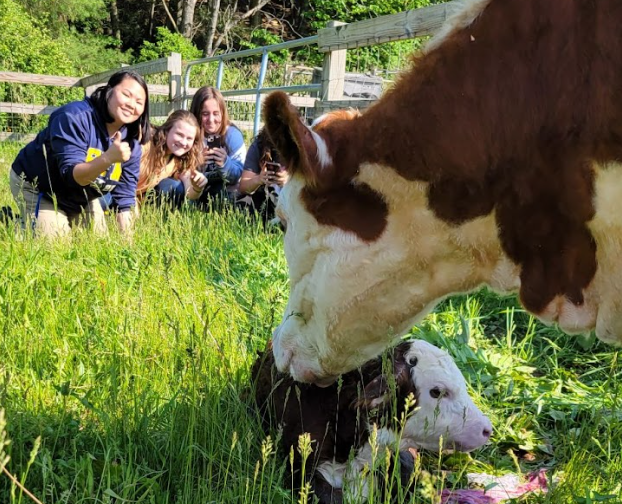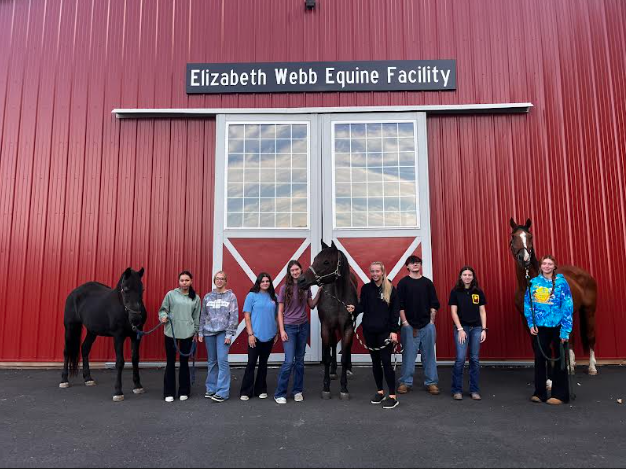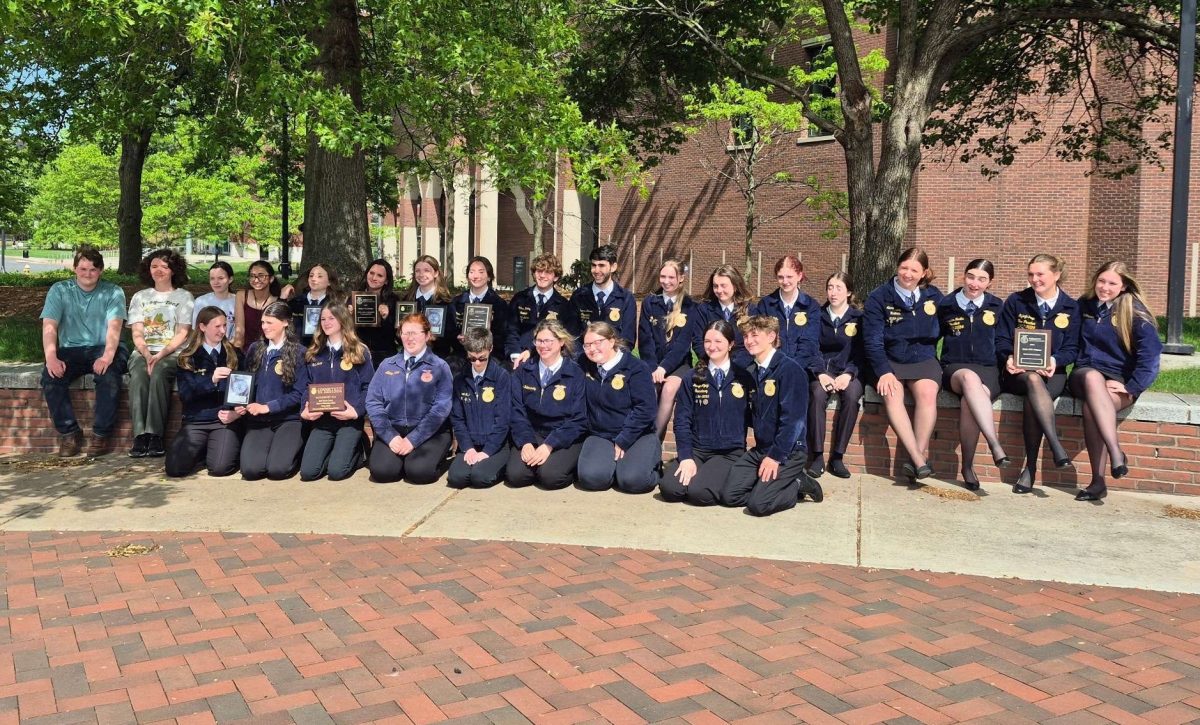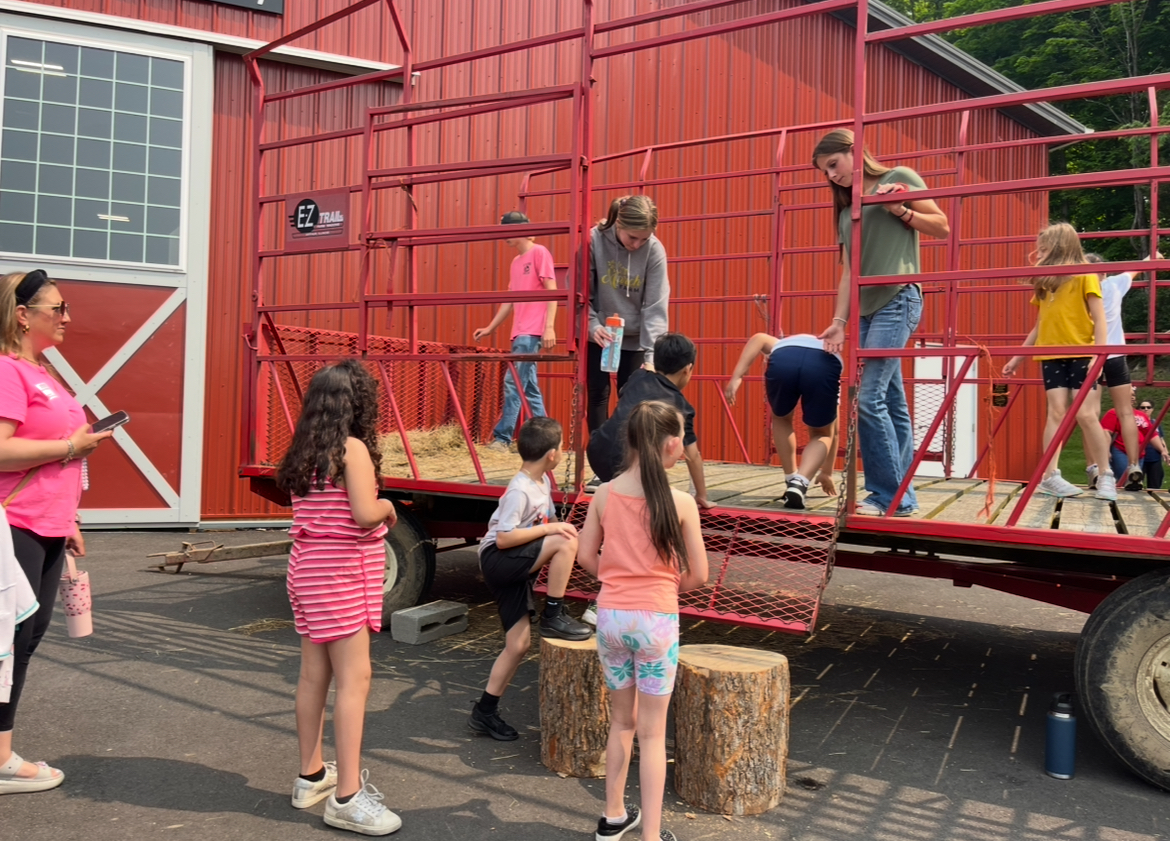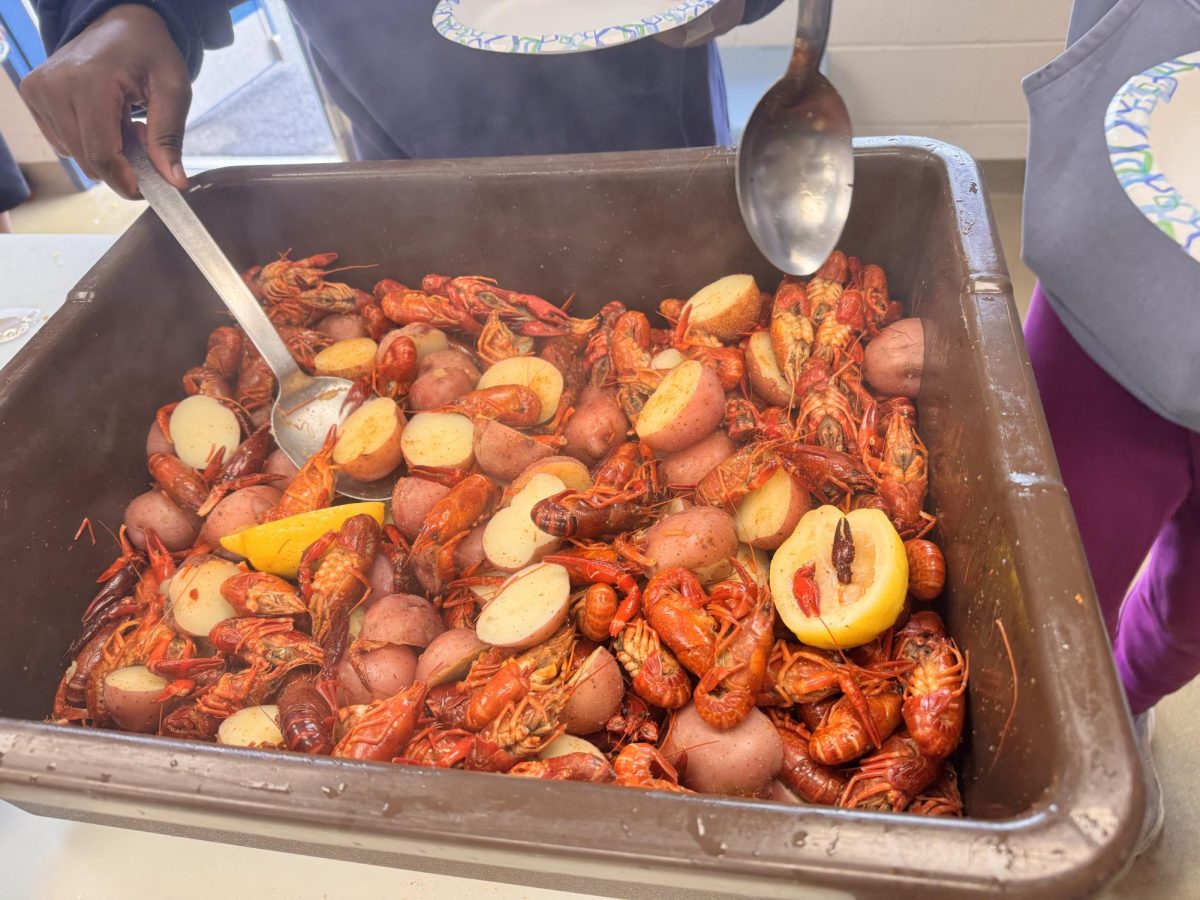WOODBURY — With the onset of spring and the new life that the season brings, something new is bound to come with it. For Nonnewaug’s agricultural program, it’s the animals having spring babies.
This calendar year the ag production classes have had two goats born and two more goats and one cow that are pregnant. Among the goats, the goat to give birth was Keepsake, who had one girl, Nostalgia, and Little Miss had four kids: two boys Leo and Callahan, and two girls who have yet to be given names. The other two goats and NHS’ cow, Delphinium, who was born on the property last year, are due in May.
For NHS students and agriscience faculty, having multiple births so close together can get a bit challenging.
“When multiple animals give birth close together, it presents several challenges, both in terms of management and animal care,” says Kathleen Gorman, the agricultural production teacher.
A juggling act — absolutely, but it’s also a matter of expertise when it comes to ensuring all of NHS’ newest arrivals are given the best possible care.
“It becomes difficult to keep a close eye on multiple animals,” says Gorman. “Signs of distress or complications might be missed if attention is divided. We are limited on space in our farm setting so strategic planning is necessary so we have enough birthing areas, and avoid shortages of supplies and [the newborns] are not competing for heat sources. In honesty, there is a physical and mental exhaustion for our caregivers as well. Students and staff may be up at all hours monitoring and assisting with births. There is the reality of decision fatigue; constant problem-solving and monitoring multiple births can be mentally draining, making it harder to quickly recognize problems and make the best choices.”
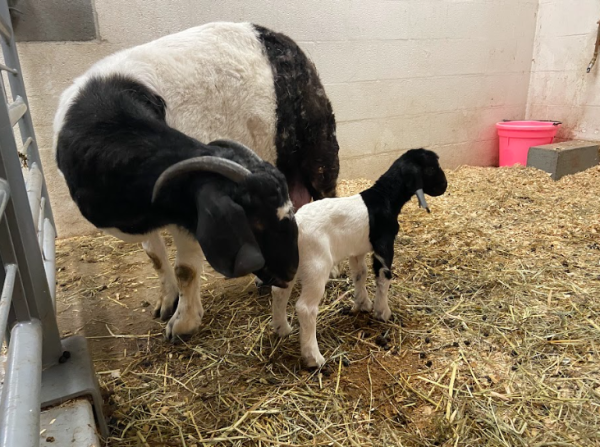
To try to make things a little bit easier, Gorman, one of 10 agriscience faculty members, has a plan in place to help prepare as much as she can.
“Preparing for multiple animal births in the spring requires careful planning and attention to detail,” says Gorman. “One of our top priorities is ensuring that our animals are in optimal condition leading up to birth. We monitor Body Condition Scores (BCS) to ensure they are neither too thin nor overweight, adjust diets in late gestation as needed, and trim hooves before birthing season to prevent lameness issues.”
With so much happening in the agriscience department this spring, faculty members are especially reliant students to help in the birthing process.
“They are the workforce that helps keep things running. They are part of the observation, and conditioning phase leading up to the birth and then they are there to assist during the birth when it is feasible,” says Gorman. “Following the births, they are the ones socializing and training our livestock. Participating in all these tasks, students gain real-world animal husbandry experience, learning responsibility, problem-solving, and the importance of observation in livestock management.”
One aspect that students and staff are concerned about is providing adequate supervision for NHS’ newest additions.
“We have moved the goats up to the large lab so they have consistent supervision,” says Christa Freel, a junior member of the goat judging team. “Something we are looking out for is ketosis. Basically, ketosis is when the mom is giving all her energy to the babies and not enough for herself. We are also constantly giving water and hay for the moms to make sure they are getting energy and growing.”
NHS students have spent multiple semesters preparing for the exact moment when agriscience animals give birth. Part of this education includes the prep work to ensure these animals are comfortable during these moments of stress.
“We make sure the pens have lots of clean bedding so they can lay down comfortably with lots of cushions for their joints,” said Freel. “Every day we also feel their ligaments near the base of their tail in order to track how close they are to kidding. Also, during lunch I go into the large lab and groom the moms to try and shed their winter coats to make them more comfortable.”
The students don’t just help things go smoothly for the animals and Gorman, but they also learn from the experience.
“Beyond the physical preparations, we also prioritize education and observation,” says Gorman. “Teaching students how to monitor animals effectively is crucial, from recognizing signs of labor — such as restlessness, nesting behavior, and other physical signs — to identifying when intervention may be necessary.”
“You gain knowledge and experience,” says Freel. “Watching the process is a good way for students to understand and learn more about the reproduction of livestock. It’s also always super stressful because you’re not able to do much but wait and watch but it’s worth it. It’s crazy how quickly the babies are able to stand and drink milk. When I went to check up one of the babies, she was up and moving and drinking in just a few hours.”
Not only do students take these ag classes for the fun of it, but they also help give students the experience they need for a future career in agriculture.
“If this is a profession you want to go into, it is a great way to see what it’s like to handle this situation but also not having all the pressure on yourself to deal with,” says Freel.
With so many variables during these stressful moments, NHS students are well-equipped to handle anything.
“The ag teachers have been through everything. Any questions you have, they have answers,” says Freel. “They also encourage you to get involved and figure out your passion so if you are interested in this stuff definitely reach out. It’s hard to put to words how amazing the experience actually is.”



